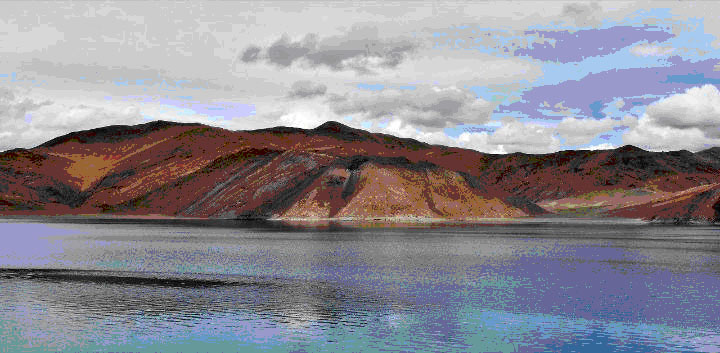Pull Back Troops From Pangong North Bank Now, India Tells China
03 Sep 2020
Even as Beijing is crying foul over Indian Army’s pre-emptive move on the south bank of Pangong Tso, New Delhi is insisting that the Chinese People’s Liberation Army (PLA) must first restore the status quo ante on the northern bank of the lake.
Tension on both banks of the Pangong Tso continued to run high on Wednesday, even as local commanders of the Indian Army and the Chinese PLA had yet another meeting for the third consecutive day to defuse tension. Talks went on for hours, but remained inconclusive, although they agreed to meet again on Thursday.
The Chinese PLA accused the Indian Army of crossing the Line of Actual Control (LAC) on the southern bank of the Pangong Tso. The PLA commander demanded that India must withdraw troops from the three hilltops overlooking Reqin Pass. The Indian Army took control of the hilltops during an operation in the late hours of Saturday and the early hours of Sunday.
New Delhi maintained that the overnight operation by its soldiers was only intended to pre-empt the Chinese PLA’s move to transgress into the territory of India. The PLA over the past few weeks deployed a large number of troops in the area, apparently preparing to make a move towards the Indian Army’s bast at Thakung on the south bank of the Pangong Tso.
A source in New Delhi told the DH that the fate of the talks between the local military commanders would depend much on the response of the Chinese PLA to the Indian Army’s demand for complete restoration of the status quo ante on the northern bank of the Pangong Tso.
The Chinese PLA’s latest move to transgress into India’s side of the LAC on the southern bank of the Pangong Tso came weeks after it dug in heels on the northern bank of the lake and declined to withdraw troops to restore the status quo in the area – thus stalling the process of disengagement it had agreed with the Indian Army to end the stand-off.
Another source in New Delhi said that the Indian Army had also “re-adjusted” its position on the north bank of the Pangong Tso during the last weekend – apparently by positioning troops on the mountain tops facing the Chinese PLA’s positions between Finger 4 and 5.
China did thin out troops from the “Finger 4” on the northern bank of the Pangong Tso in early July, after it agreed with India on a process of mutual withdrawal of troops from all face-off scenes along the LAC. The PLA, however, held on to the area between “Finger 5” and “Finger 8” – an eight-kilometre-long stretch it took over after its stand-off with the Indian Army started in early May. It rather brought in more troops, built bunkers and observation posts, dug trenches, pitched tents and set up new prefabricated huts to accommodate additional soldiers, apart from deploying its navy unit with more speed-boats for patrolling on the lake.
The Chinese Army not only fortified its position in the entire stretch from “Finger 5” to “Finger 8”, but also occupied the ridgeline overlooking the “fingers” – thus effectively controlling an area of nearly 30 sq. kms. denying access to the Indian Army to places it regularly patrolled before the stand-off started three months ago.
The Indian Army is currently holding on to its position between “Finger 2” and “Finger 3” on the northern bank of the lake.
The spurs of the mountain range on the northern bank of the Pangong Tso jut towards the lake like the ‘fingers’ of the palm, with the “Finger 1” at the western end and the “Finger 8” at the eastern end. China claims that the LAC, after cutting through the Pangong Tso, goes through the “Finger 4”. India, on the other hand, claims that the line goes through the “Finger 8”.
The Indian Army earlier regularly sent patrols from its Maj Dhan Singh Thapa post near “Finger 3” all the way up to “Finger 8”. But the soldiers of the two nations had a scuffle near “Finger 4” on May 5. The PLA later built bunkers and observation posts and deployed additional troops in the area, thus denying access to the Indian Army to its earlier patrolling limit – the “Finger 8”. The Indian Army too deployed additional troops in response to the PLA build-up and the stand-off started and spread to other areas along the LAC.
That China dug in its heels in the ‘finger’ areas on the bank of the Pangong Tso was evident when its envoy to India, Sun Weidong, asserted the communist country’s claim on the entire stretch. “On the northern bank of Pangong Lake, China’s traditional customary boundary line is in accordance with the LAC. There is no such (thing) as China expanded its territorial claim,” Sun said, while responding to a question during a webinar hosted by Institute of Chinese Studies in New Delhi on July 30.
Courtesy: Opera News/ deccanherald.com

